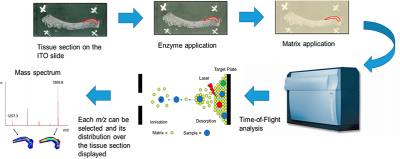
Using mass spectrometry imaging (MSI) to identify signs of osteoarthritis (OA), University of South Australia scientists are learning more about changes at the molecular level which indicate the severity of cartilage damage. A study led by PhD student Olivia Lee and her supervisor Associate Professor Paul Anderson has mapped complex sugars on OA cartilage, showing different sugars are associated with damaged tissue compared to healthy tissue. The finding will potentially help overcome one of the main challenges of osteoarthritis research—identifying why cartilage degrades at different rates in the body.
“Despite its prevalence in the community, there is a lot about osteoarthritis that we don't understand”, Professor Anderson says. “It is one of the most common degenerative joint diseases, yet there are limited diagnostic tools, few treatment options and no cure.”
Existing OA biomarkers are still largely focused on bodily fluids, which are neither reliable nor sensitive enough to map all the changes in cartilage damage. By understanding the biomolecular structure at the tissue level and how the joint tissues interact in the early stages of osteoarthritis, the researchers say any molecular changes could be targeted to help slow the progression of the disease with appropriate medication or treatment.
In a recent paper published in the International Journal of Molecular Sciences, Lee and her colleagues from the University of South Australia’s Musculoskeletal Biology Research Laboratory and the Future Industries Institute explore how advances in MSI to detect OA are promising.
“To date, diagnosing osteoarthritis has relied heavily on x-rays or MRI, but these provide limited information and don't detect biomolecular changes that signal cartilage and bone abnormalities”, Lee says. “By contrast, alternative imaging methods such as MSI can identify specific molecules and organic compounds in the tissue section.”
MSI has already demonstrated its strengths in identifying biomarkers for different types of cancer, and the researchers are hopeful it can achieve the same for early diagnosis of osteoarthritis.










